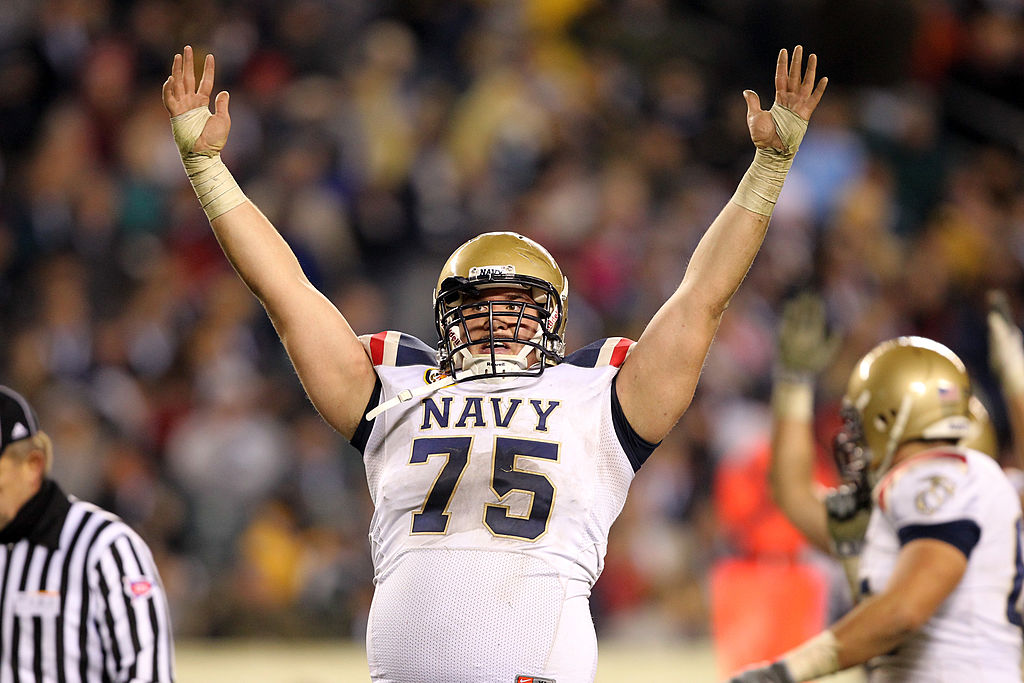The annual Army-Navy game serves as a reminder of the sacrifice and service that the players give on the field, in the classroom and eventually for their country. However, some forget about the physical sacrifice that a group of these guys must undertake as soon as their season ends.
Senior Midshipmen football players are the people we are talking about, as they must immediately begin work to transition to a life of service in the Navy after their playing days are over. It’s a little talked about, but often brutal transition for many of the players.
After all, no Midshipmen can graduate the Naval Academy without being able to pass the Navy’s Physical Readiness Test (PRT). Certainly a 6-5, 300-pound offensive lineman isn’t exactly in shape for submarine duty or to lead soldiers into battle.
That’s were Cliff Dooman, Navy’s director of Olympic sport performance, comes in to the mix though. Getting linemen and other players down from 295 pounds to 220 pounds or less in a matter of a few months is incredibly difficult. However, that is Dooman and the players’ task following the season.
According to Dooman, one of the keys is buying new shoes and starting to transition from work for explosiveness to endurance work. Gone are the days of needing to dead-lift and to run 10 meter sprints. Those are replaced with needing to run 1 1/2 miles in under 10 minutes, 30 seconds.
So, it should come as no surprise that for many the annual tailgate following the Army-Navy game in Annapolis is known as “the last supper.” It’s the final chance for players to eat like they are prepping for football and not life in the Naval uniform after college is over.
One of the pratfalls many players used to fall in to was the perceived need to crash diet to loose the weight. Dooman brought in the athletic department dietician, Jessica Frederickson, to help the players learn how to properly diet and stay healthy.
“I don’t like being aggressive in general,” she said. “Aggressive weight loss is not my motive. My motive is overall health. It’s really all about balance: incorporating some more healthy foods along with the things you really enjoy because that keeps you normal.”
Basically, she helped them realize that fried foods covered in gravy aren’t exactly good foods to eat to cut weight and reshape a body in a positive way. Replacing their habits quickly was important, so out went sodas and late night pizza runs and in went greens and lean proteins.
A total of 32 seniors were on the Midshipmen team this past season, and they all banded together knowing they all needed to drop pounds in preparation for the PRT. Each of them helping each other stay on track seems to be key.
So does the fact that they have been training hard for football for the past four years too.
“They already have that mind-set that they’re going to work hard, that they’re going to train,” said Mike Brass, Navy’s senior associate athletic director for sport performance. “That’s what they’ve been doing since they got here. It’s just a different way of doing it.”
The good news? It all paid off, as each of the senior offensive linemen passed the PRT. However, for some, the future holds a life in the Marines and that means a whole different set of standards and tests to pass including a 3-mile run and pull-ups.







